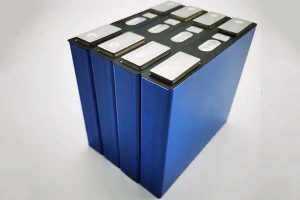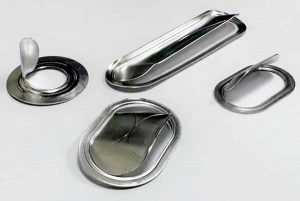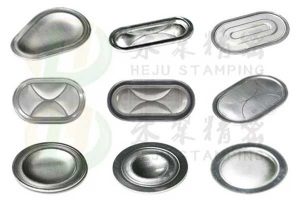Is the Age of the Prismatic Lithium Battery Coming?-Prismatic Lithium ion Battery Safety Vents Manufacturer
In today’s power battery market, soft-pack batteries survive in the cracks, while prismatic batteries become the mainstream.
Soft-pack batteries have been unpopular for a long time. Even in theory, compared with prismatic and cylindrical batteries that use hard shell packaging, soft-pack batteries are less likely to explode after thermal runaway. But in reality, the factor that has the greatest impact on the entire automotive battery system is the consistency of the single cell, which is precisely one of the disadvantages of soft-pack batteries and also leads to frequent safety accidents in electric vehicles equipped with soft-pack batteries.
Advantages and Disadvantages of Prismatic & Soft Pack & Cylindrical Batteries
Prismatic Batteries
- The aluminum housing is strong and safe, with a good cycle life
- Large cell capacity and a small number of modules reduce the risk of monitoring and management
- The packaging and manufacturing process is simple and reliable
- The cell is generally consistent
- Average energy density
Soft Pack Batteries
- The aluminum-plastic film shell is prone to thermal runaway but not to explosion.
- It is easy to cause flatulence, and the battery cell bulges and deforms.
- After long-term use, the battery life drops sharply.
- The soft package shell is weak and needs to be protected at the module level.
- The battery cell has a good consistency.
- High energy density
Cylindrical Batteries
- The production process is mature, and the battery pack is flexible.
- The number of battery packs is large, and monitoring and management are difficult.
- The battery cell consistency is good.
- The single-cell energy density is high.
As early as 2019, a Hyundai electric car equipped with LG New Energy’s soft-pack battery exploded. Since then, GM, Volkswagen, and Mercedes-Benz Smart electric cars equipped with the same battery have caught fire one after another. LG New Energy paid billions of dollars, and the reputation of soft-pack batteries plummeted. In 2022, South Korean market research organization SNE Research proposed that major car companies using soft-pack batteries in the world are turning to prismatic batteries.
At the same time, with the support of the domestic lithium battery industry chain, prismatic batteries have ushered in great development. In the domestic market, the market share of prismatic batteries has exceeded 90%. And in the international market, taking the European market as an example, according to the latest data from SNE Research, the market share of prismatic batteries in 2023 has reached 49%, far exceeding 19% in 2019.
This transformation marks the arrival of the era of prismatic batteries. So far, mainstream car companies such as Volkswagen, BMW, Toyota, and Hyundai have begun to choose prismatic batteries.
Why Prismatic Lithium Batteries are More Reliable?
Research shows that power batteries will lose more power as the number of charging cycles increases. Especially high-power fast charging technology will cause the internal temperature of the battery to rise, so safety must be put first. For new energy vehicles, thermal runaway is the most serious and most frequent safety accident.
A prismatic lithium battery pack is usually composed of multiple prismatic cells, which are used to store and release a large amount of electrical energy. The power battery pack stores a large amount of energy. Once an abnormal situation occurs (such as overcharging, over-discharging, high temperature, etc.). It may cause gas generation and pressure increase in the battery pack and even cause fire or explosion in severe cases.

As a safety measure, power battery packs are typically outfitted with an pressure relief vents. This essential safety feature is designed to regulate internal battery pressure and promptly release excess or abnormal pressure to minimize the risk of fire or explosion.
The prismatic battery safety vents (also known as pressure relief vents or safety pressure vents) operates on the principle of thermal expansion and pressure difference. Exceeding the preset safety pressure value causes the valve to release the built-up gas by rupturing, based on the force exerted by the pressure difference. The explosion value of the pressure relief vents in new energy batteries is typically determined by engineering design.
How to Purchase Lithium-ion Battery Safety Vents

Car companies that purchase prismatic li battery housing safety relief vents should note that the following requirements need to be met during the explosion of lithium ion battery safety vents. First, fast reaction speed. It is the ability to blow open the valve in time before the gas pressure inside the battery reaches a dangerous value. Second, reliable working performance. That is, the ability to work normally under different environmental conditions and not be affected by external factors. Third, long-lasting service life, to ensure long-term stable operation and avoid frequent replacement. It is recommended to choose the manufacturer’s unified battery explosion-proof plate standard parts to reduce the cost of mold opening and shorten the research and development cycle to achieve the purpose of cost reduction.
HejuStamping-Prismatic Lithium ion Battery Safety Vents Manufacturer

Dongguan Hejustamping specializes in manufacturing of prismatic lithium ion battery safety vents for new energy vehicles. As one of the pioneering companies in China to develop and produce EV battery safety vents, we offer a wide range of models with comprehensive specifications. Our single pressure range can reach 0.03MPA, with CPK exceeding 2.0. With a robust technical R&D team, we actively collaborate with customers in developing new products. We have obtained three major management system certifications – ISO9001, ISO14001, and IATF16949. With a daily production capacity in the millions, we are well-equipped to meet your production needs.
